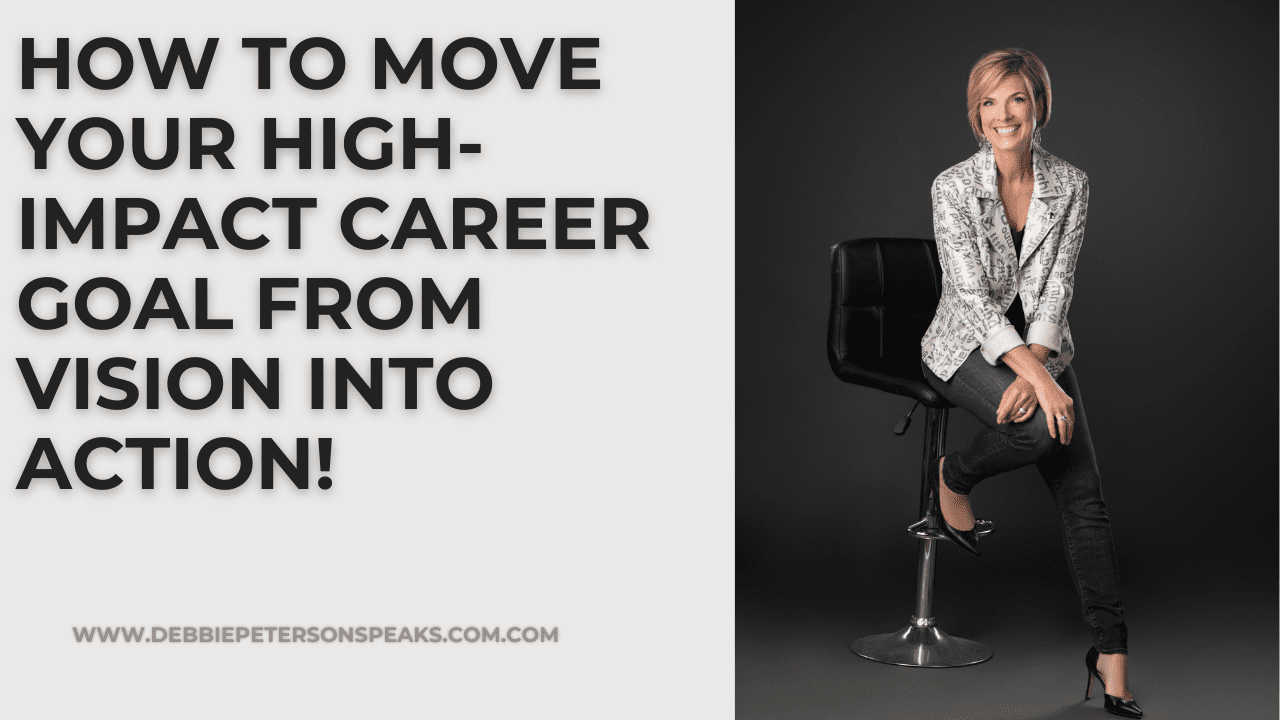Welcome back! In the last article, we explored how to identify your High-Impact Career Goals. Now, let’s focus on translating those goals from vision into action. It’s one thing to dream big; it’s another to make those dreams a reality. The key lies in transforming vague aspirations into clear, achievable outcomes.
The Pitfall of Vague Goals
The main weakness in goal setting is ambiguity. Vague goals are like trying to hit a target in the dark. You know what you want to achieve in a broad sense, but the lack of specificity makes it hard to take action. Often, you hold it in your head, not knowing where to begin. This is where the concept of SMART goals comes in and why I value its concepts here.
SMART Goals: Getting Your Vision Into Action
SMART goals are Specific, Measurable, Achievable, Relevant, and Time-bound. This framework turns lofty ambitions into a clear roadmap. Here’s how you can apply it:
- Specific: Define exactly what you want to achieve. Instead of saying, “I want to be more successful in my career,” specify what success looks like to you. Is it a promotion, a new skill, or a particular achievement?
- Measurable: How will you track your progress? If your goal is to increase sales, by what percentage? If it’s to improve skills, how will you measure improvement?
- Achievable: Your goal should be challenging yet attainable. Consider your current resources and constraints. Go beyond something you’ve already achieved and stretch for more!
- Relevant: Ensure your goal aligns with your broader career direction and values.
- Time-bound: Set a deadline. A time frame creates urgency and prompts action because one day and someday never come.
Visualizing Your Goal: The Org Chart Approach
Imagine an organizational chart with the CEO at the top. With this tool, your High-Impact Career Goal is the CEO spot. The goal becomes more specific and actionable as you move down the chart.
- Top (CEO): Your overarching goal. Example: Advance to a senior leadership position within your organization. If you have the exact position, you get bonus points for being specific!
- Middle Management: These are the sub-goals that support your main goal. Example: Enhance leadership skills, build a stronger network within the industry, and increase visibility in your current role.
- Lower Levels: Specific actions for each sub-goal. Example: Enroll in a leadership development program, attend industry networking events, and volunteer for high-visibility projects in your current role.
This visual approach helps you break down your goal into manageable steps, making it less overwhelming and more achievable. Focusing on specific actions at each level creates a clear path or roadmap towards your ultimate leadership goal.
Anticipating Challenges
No path to success is without obstacles. Anticipating these challenges is a key element of this process. Ask yourself:
- What might stand in my way? Common obstacles include time constraints, lack of resources, or other external factors.
- How will I overcome these challenges? Develop contingency plans. If time is an issue, how can you reorganize your schedule? If resources are limited, what creative solutions can you find? Who can you connect with that might offer some guidance?
Key Questions to Ask
To further refine your goals, consider these questions:
- How will I know when I’ve achieved my goal? Define what success looks like. Is it a formal recognition, a feeling of satisfaction, or a new title and office?
- What will I do once I reach my goal? Think about the next steps after achieving your goal. How will it impact your career path?
Wrapping Up
Setting High-Impact Career Goals is more than just a wish list; it’s about creating a practical, actionable plan that moves you closer to your career aspirations. Using the SMART framework and visualizing your goals like an org chart, you can turn your vision into a series of achievable steps. Remember, the journey to achieving your goals is as important as the goals themselves. Embrace the challenges and learn from them; there is no failure, only feedback. You get to incorporate the new information.
Stay tuned for more next steps next week to get you into action in our series, where we’ll continue to explore ways to achieve Clarity and high-impact success in your career.
Until next time, here’s wishing you the Clarity you deserve so you can make the impact you desire in your leadership and life.



